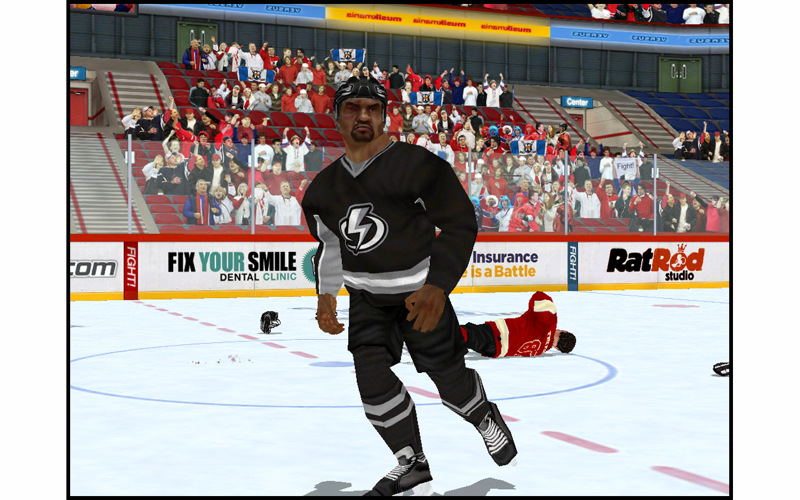

Significant modifications from the original rule involve penalties which can be assessed to a fight participant deemed to have instigated the fight and additional penalties resulting from instigating a fight while wearing a face-shield. Referees are given considerable latitude in determining what exactly constitutes a fight and what penalties are applicable to the participants. In the current NHL rulebook, the archaic reference to "fisticuffs" has been removed fighting is now governed under Rule 46 in the NHL rulebook. Promoters such as Tex Rickard of Madison Square Garden, who also promoted boxing events, saw financial opportunities in hockey fights and devised marketing campaigns around the rivalries between various team enforcers.
#Hockey fight pro game professional#
Rule 56 and its language also filtered down to the minor professional and junior leagues in North America.

Rather than ejecting players from the game, as was the practice in amateur and collegiate hockey, players would be given a five-minute major penalty. In 1922, the NHL introduced Rule 56, which formally regulated fighting, or " fisticuffs" as it was called in the official NHL rulebook. The emergence of enforcers, who protected the puck handlers and fought when necessary, followed shortly thereafter. Therefore, puck handlers played at close quarters and were subject to a great deal of physical play. Creation of the blue lines allowed forward passing, but only in the neutral zone. The implementation of some features, such as the blue lines in 1918, actually encouraged fighting due to the increased level of physical play. Other theories include the poverty and high crime rates of local Canada in the 19th century. There are a number of theories behind the integration of fighting into the game the most common is that the relative lack of rules in the early history of hockey encouraged physical intimidation and control. History Hockey fights per NHL seasonįighting has been a part of ice hockey since the sport's rise in popularity in 19th century Canada. 2.1 North American professional leagues.Most fans and players oppose eliminating fights from professional hockey games, but considerable opposition to fighting exists, and efforts to eliminate it continue. Despite its potentially negative consequences, such as heavier enforcers (or "heavyweights") knocking each other out, administrators at the professional level have no plans to eliminate fighting from the game, as most players consider it essential. The debate over allowing fighting in ice hockey games is ongoing. Those who defend fighting in hockey say that it helps deter other types of rough play, allows teams to protect their star players, and creates a sense of solidarity among teammates. Although often a target of criticism, it is a considerable draw for the sport, and some fans attend games primarily to see fights. Physical play in hockey, consisting of allowed techniques such as checking and prohibited techniques such as elbowing, high-sticking, and cross-checking, is linked to fighting. Therefore, the vast majority of fights occur in the NHL and other North American professional leagues. Unique among North American professional team sports, the National Hockey League (NHL) and most minor professional leagues in North America do not eject players outright for fighting (although they may do so for more flagrant violations as part of a fight) but major European and collegiate hockey leagues do, and multi-game suspensions may be added on top of the ejection. While officials tolerate fighting during hockey games, they impose a variety of penalties on players who engage in fights. Some fights are spontaneous, while others are premeditated by the participants. Fights may be fought by enforcers, or "goons" ( French: Bagarreurs) -players whose role is to fight and intimidate-on a given team, and is governed by a system of unwritten rules that players, coaches, officials, and the media refer to as "the code". A fight during a junior league ice hockey game between Frölunda HC and VIK Västerås HKįighting is an established tradition in North American ice hockey, with a long history that involves many levels of amateur and professional play and includes some notable individual fights.


 0 kommentar(er)
0 kommentar(er)
